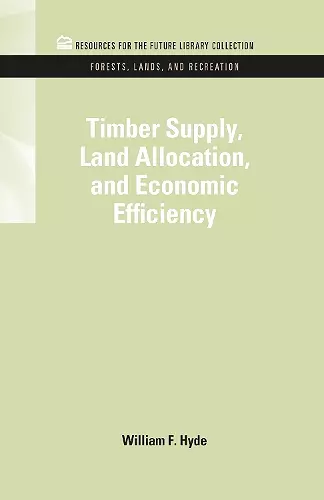Timber Supply, Land Allocation, and Economic Efficiency
Format:Hardback
Publisher:Taylor & Francis Inc
Published:19th Jan '11
Currently unavailable, and unfortunately no date known when it will be back

First Published in 2011. This is the sixth volume in the Forests, Lands, and Recreation set of ten volumes. This text is one of many on the topic of timber supply, a perpetually central issue in forest economics and policy. But it is also something else: It is an attempt to examine the economic efficiency of investments in timber production. Special attention is directed to the increasingly important issue of investments in forestland, particularly public forestland, where allocation of land between timber production and other forest uses is an issue of national policy importance.
'Hyde's book explains some of the economic theory which is relevant for modeling long run timber supply and the optimal allocation of forest land to timber production and to other uses, principally recreation. He applies this analysis to two case studies from the important Douglas fir region (roughly the area of Oregon and Washington west of the Cascade crest) which produces about one quarter of the nation's softwood timber...the book is well written. Hyde's prose is clear, and his style is accessible...used as a text in my graduate course in natural resource economics; the book was given consistently good reviews. Any economist concerned with timber supply and the management of public lands should read [this book].'
Journal of Economic Literature
'Hyde applies economic efficiency criteria to the management of forests, with an illustrative empirical case study of the Douglas fir forests of the Pacific Northwest... Highly recommended for graduate and undergraduate students. The index is excellent and includes abbreviations, which is a boon to the reader.'
Choice
ISBN: 9781617260421
Dimensions: unknown
Weight: 385g
248 pages